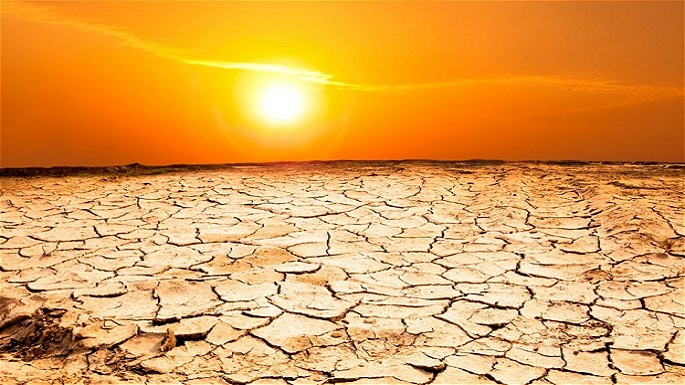
Understanding the weather reports of IMD and European weather agency
European weather agency’s Copernicus climate change programme declared 2019 as the second warmest year ever. Only 2016 was warmer than 2019. Indian Meteorological Department (IMD) also recently said 2019 was the seventh warmest year on record for India.
How warm was 2019 across the world?
The Copernicus programme said, the average annual global surface temperature increased 0.59 degrees Celsius higher than the average of the 30-year period 1981-2010, which is taken to be normal in current assessments. In comparison to pre-industrial times, a reference to the 1850-1900 period, which is considered the baseline in climate change debates, 2019 was a 1.2 degree Celsius warmer. Within 2019, December was 0.74 degrees Celsius above average, making it the warmest December ever along with 2015 December which was similarly warm.
The extent of sea ice in both the Arctic and Antarctic ocean is often taken as an important indicator of the impact that global warming was causing. The European weather agency’s programme said the Antarctic sea ice extent was the third-lowest ever in December 2019 since the start of satellite observations in 1979. The ice extent in the Antarctic sea was 9.3 million square km on average, which was about 15 per cent lower than the 1981-2010 average for the month. The ice extent in Arctic ocean was 11.8 million square km. It was about 8 percent below the average. The lowest sea ice near the Arctic was recorded in 2010 when it dipped about 11 per cent than the average.
What IMD has found in the climate report for India?
Indian Meteorological Department in its climate report said that India had warmed by 0.61 degree Celsius in the last 100 years. IMD maintains weather records since 1901. The annual mean surface air temperature in 2019 average across the country was 0.36 degrees Celsius higher than the 1981-2010 average. 2016 was the warmest year, with temperatures 0.71 degree Celsius above average. It is followed by 2009 (+0.541 degrees Celsius), 2017 (+0.539 degree Celsius) and 2015 (+0.42 degree Celsius).
Annual temperatures remained high despite winters being one of the chilliest in recent decades. The winter season extending from November from 2018 to February 2019 was colder than average across the globe. Meteorologists attributed it to the effect of Arctic vortex. Usually, cold winds blow from west to east around the North pole. Due to global warming, warming over the Poles happens at a faster rate than other regions on the globe. This resulted in the distribution of cold westerly winds that started blowing to the southern latitudes of the northern hemisphere.
Last winter, these winds even reached India in the form of cold blasts. All of north India recorded severe cold that triggered snow avalanche in higher reaches.
Despite the cold winter, the average temperature of this year was way higher than normal, indicating the rest of the year to be warmer than usual. April 2019 was the seventh warmest April since 1901. It was 0.77 degrees Celsius more than 1981-2010 average. June 2019 was fourth highest with temperature increasing 1.07 degree Celsius more than usual. July 2019 was the warmest ever at +0.68 degree Celsius and November was third warmest at +0.72 degree Celsius.
Read more: The Changing Centuries: Cycle of Evolution
Why India was warmer in 2019?
Scientists believe that temperature rose to burning-high because of two reasons.
EL NINO: Scientists believe that El Nino, the abnormal warming of the equatorial Pacific Ocean was a low-intensity one in 2019, but its prevalence till July could have contributed to the warming. Temperatures recorded at the time of El Nino years and their subsequent years have usually been higher than usual. It has been noticed all along EL Nino years from 1951 to 2019.
Delayed Monsoon:
Southwest Monsoon arrived in India a week later in June last year which made the season warmest ever. The delay coupled with less rainfall recorded during June and July led to a further increase in the season’s average temperature. The June to September monsoon season saw a record warming in 119 years with temperature going +0.58 degrees Celsius higher than normal. It happened despite the excess rainfall, ending with 109 per cent of the Long Period Average.
Have a news story, an interesting write-up or simply a suggestion? Write to us at info@oneworldnews.com








